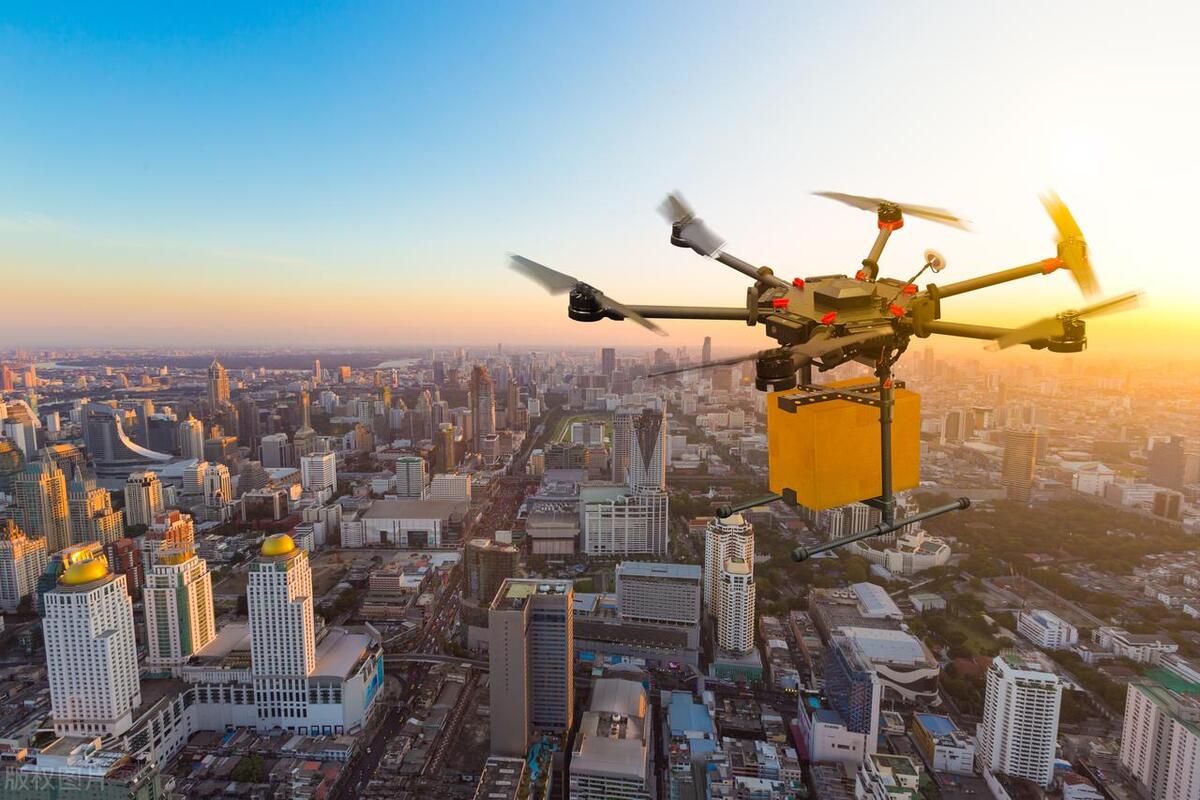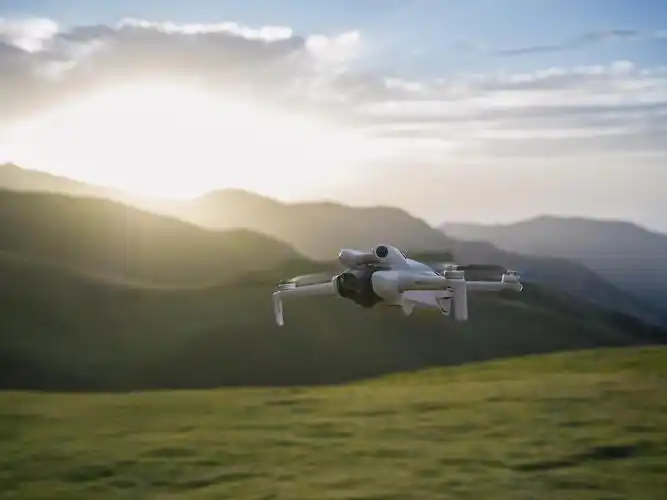Analysis of the current development status and future prospects of the drone technology industry in 2025

The development of the drone technology industry not only requires strong technological research and development capabilities as support, but also necessitates a well-established industrial chain and extensive market demand to drive its sustained growth. In countries along the "Belt and Road", the development of the drone technology industry holds immense significance.
The development of the drone technology industry in countries along the "Belt and Road" holds profound strategic significance. From an economic perspective, the growth of this industry can drive the coordinated development of related manufacturing, electronic information, communication, and other industries in these countries, creating new economic growth points and promoting industrial structure upgrading and economic diversification.
Analysis of the current development status and future prospects of the drone technology industry in 2025
In 2025, the drone technology industry is undergoing a qualitative change from "instrumentalization" to "platformization", becoming the core carrier of the global low-altitude economic strategy. As the world's largest drone manufacturing and application market, China's market size exceeded 150 billion yuan in 2025, with a compound annual growth rate exceeding 30%, accounting for 40% of the global market share. According to the "Analysis of the Competitive Landscape and Investment Risk Prediction Report on the Drone Technology Industry in the 'Belt and Road' Initiative from 2025 to 2030" by Zhongyan Puhua Industry Research Institute, drone technology is reshaping the industrial landscape with three major trends: "intelligent autonomy, cluster collaboration, and diversified scenarios".
1. Current market development: technological breakthroughs and scenario fission
1.1 Market size: The driving force behind the 150 billion yuan
In 2025, the market size of drones in China will reach 150 billion yuan, with the main driving forces coming from:
Industrial drones: accounting for over 70%, with agricultural and forestry plant protection, logistics and transportation, and geographic surveying and mapping being the three core areas. By 2024, agricultural drone operations will reach 2.5 billion mu-times, with a market size of approximately 12.5 billion yuan; the market size of express logistics drones will be approximately 30 billion yuan, accounting for 30% of the total logistics and distribution volume.
Consumer drones: Primarily used for aerial photography and entertainment, with leading companies like DJI accounting for 70% of the global market share. However, the growth rate has slowed down to 15%, indicating that the industry has entered a phase of competition based on existing market share.
Military drones: The global market is continuously expanding, with an estimated value of $16.4 billion by 2032. China leads in technologies related to integrated reconnaissance and combat, as well as stealth drones.
1.2 Technological breakthrough: From "remote control flight" to "autonomous decision-making"
The iteration of drone technology presents three major characteristics:
Intelligent autonomy: AI algorithms enable dynamic path planning and adaptive task execution. Meituan and JD.com have piloted drone delivery in Shenzhen, reducing collision risks by 90% through AI visual obstacle avoidance technology.
Cluster Collaboration: Guangqi Technology's large-scale drone swarm products have entered the test flight phase. Through cluster control algorithms, dozens of drones can autonomously collaborate to complete complex tasks, increasing logistics and distribution efficiency by three times.
Energy Innovation: Breakthroughs in hydrogen fuel cell and solid-state battery technologies have extended the endurance of drones from 30 minutes to 2 hours, with their load capacity increased to 50 kilograms, supporting long-distance logistics and emergency rescue scenarios.
According to the "Analysis of the Competitive Landscape and Investment Risk Prediction Report for the 'Belt and Road' Drone Technology Industry from 2025 to 2030" written by the Zhongyan Puhua Research Institute, Section 2: Market Size and Industry Chain Analysis
2.1 Market size: dual growth in global and Chinese markets
Global Market: By 2025, the global drone market is expected to surpass $50 billion, with the traffic management segment accounting for approximately 20%, exceeding $10 billion.
Chinese Market: The UTM market in China has reached a size of RMB 15 billion, accounting for 30% of the global market share, with a compound annual growth rate (CAGR) exceeding 30%.
2.2 Industry chain map: from core components to terminal services
The drone industry chain presents a three-tier structure: "upstream core components - midstream complete machine manufacturing - downstream application services":
Upstream core components:
Battery: Breakthroughs in hydrogen fuel cell and solid-state battery technologies have been made, with energy density increased to 400Wh/kg and endurance extended to 2 hours.
Flight control system: The bionic AI flight control system optimizes dynamic path planning through end-side visual navigation, achieving a success rate of over 99% in obstacle avoidance in complex environments.
Sensors: The cost of high-precision GNSS modules has decreased by 95%, and millimeter-wave radar achieves millisecond-level obstacle avoidance.
Midstream complete machine manufacturing:
Industrial drones: Companies such as DJI and XAG occupy 80% of the agricultural plant protection market, and logistics drones have achieved a payload capacity of over 50 kilograms.
Consumer-grade drones: DJI Innovation holds a 70% share of the global market, but faces competitive pressure from domestic manufacturers such as Daotong Intelligence and Hapson.
Downstream application services:
Agricultural services: There are over 15,000 drone-based unified pest management service organizations, covering the prevention and control of major crop pests and diseases nationwide, with a coverage rate of 53.67%.
Logistics services: SF Express and JD.com have established drone logistics hubs in Guangdong, Zhejiang, and other regions, with an average daily delivery volume exceeding 100,000 orders.
Urban services: Pilot projects for drone traffic management systems have been launched in cities such as Beijing, Shanghai, and Shenzhen, enabling dynamic allocation of airspace resources.
2.3 Regional pattern: Chinese leadership and global collaboration
China: Forming an industrial layout of "R&D and manufacturing in the Pearl River Delta - application demonstration in the Yangtze River Delta - resource support in the central and western regions", with drone patent applications accounting for 60% of the global total by 2025.
The United States: Leading in military drone technology, with General Atomics' "Predator" series accounting for 40% of the global military market share.
Europe: Parrot from France and Volocopter from Germany are leading in technology in the fields of industrial drones and eVTOLs, but their market scale is less than one-third of China's.
III. Future Market Outlook
3.1 Technological Trend: Deep Integration of 6G Communication and AI
In the next five years, drone technology will exhibit three major trends:
6G communication: It achieves integrated communication across air, land, and space, supporting ultra-long-distance and ultra-high-speed data transmission for drones in complex environments, with a latency of less than 1ms.
AI and drone integration: Drones will possess autonomous decision-making capabilities, dynamically adjusting their flight paths to respond to sudden weather conditions or airspace restrictions, resulting in a 50% increase in mission execution efficiency.
Cluster collaboration: Multiple drones achieve task allocation and path coordination through the UTM system, resulting in a threefold increase in efficiency in areas such as logistics and distribution, agricultural plant protection, and more.
3.2 Market growth point: explosion in niche markets
Drone swarm: Large-scale applications will be realized in logistics, agriculture, emergency rescue, and other fields by 2025, with the market size exceeding 5 billion yuan.
Metamaterial applications: Through metamaterial stealth technology, the radar reflection cross-section area of drones is reduced by 90%, significantly enhancing the battlefield survivability of military drones.
Data monetization: Data collected by drones, such as traffic flow and environmental monitoring, is shared through the UTM system, providing decision support for governments and enterprises, and giving rise to a multi-billion-yuan data service market.
The drone technology industry is at a critical turning point, transitioning from a "tool revolution" to a "platform revolution". Leveraging policy support, market scale, and manufacturing advantages, China has become a core participant in the global industrial chain. However, it still needs to catch up with international advanced levels in terms of high-end materials and original technology.
In the future, drone technology will be deeply integrated into human production and life, becoming the core engine of the low-altitude economy. Only by deeply understanding the underlying logic can we seize the initiative in the transformation and jointly promote the inclusive development of drone technology.





